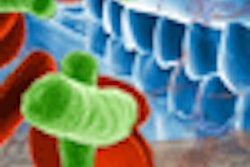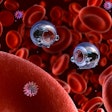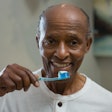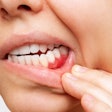The bacteria in the human mouth -- especially those under the gums -- are as powerful as a fingerprint at identifying a person's ethnicity, according to a new study in PLOS One (October 23, 2013).
Researchers at Ohio State University (OSU) identified almost 400 different species of microbes in the mouths of 100 study participants belonging to four ethnic groups: non-Hispanic blacks, Caucasians, Chinese, and Latinos.
Only 2% of bacterial species were present in all individuals -- but in different concentrations according to ethnicity -- and 8% were detected in 90% of the participants. The researchers also found that each ethnic group in the study was represented by a "signature" of shared microbial communities.
The study is the first to show a microbial signature that can discriminate among ethnicities, according to Purnima Kumar, BDS, PhD, an associate professor of periodontology at OSU and senior author of the study.
Dr. Kumar and colleagues collected samples of bacteria from the saliva, tooth surfaces, and under the gums of the study participants. They then used DNA deep-sequencing methodology to obtain an in-depth view of the microbial communities in their natural setting.
The researchers trained a machine to classify each assortment of microbes from under the gums according to ethnicity, which produced a bacterial community that predicted an individual's ethnicity with 62% accuracy. The classifier identified African-Americans according to their microbial signature correctly 100% of the time.
The findings could help explain why people in some ethnic groups, especially African-Americans and Latinos, are more susceptible than others to develop gum disease. The research also confirms that one type of dental treatment is not appropriate for all, and could contribute to a more personalized approach to oral care.
Though it's too soon to change dental practice based on this work, Dr. Kumar said the findings show that there is great potential to develop chairside tools to determine a patient's susceptibility to disease.
Using only the bacteria found under the gums -- called subgingival microbes -- the classifying machine performed best at positively identifying African-Americans according to their microbial communities, followed by positive identifications of Latinos at 67% and Caucasians at 50% -- but with 91% specificity, meaning the classifier determined how often a sample did not come from a white person 91% of the time.
The researchers then expanded the selection of total microbes in all areas of the mouth, and identified surrogate communities of bacteria that were present in at least 80% of participants of each ethnic group. These communities showed a prediction likelihood of 65% for African-Americans, 45% for Caucasians, 33% for Chinese, and 47% for Latinos.
The researchers have started on a multistudy investigation of the role the body's microbial communities play in preventing oral disease. The group already has determined that smoking disrupts the healthy bacterial community in the oral cavity, giving disease-causing microbes easier access to the mouth.



















